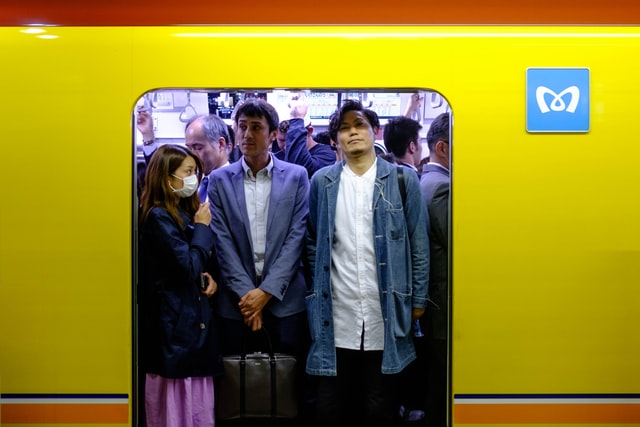Your Guide to the Tokyo Metro Vs. Seoul Metro

My Korean co-teacher warned me, but I didn’t know what to expect.
“You know,” she said over her seaweed soup. “Tokyo’s subway system is very different than Seoul’s! It’s very confusing.”
I didn’t confess that Seoul’s subway metro system confused me – especially coming from a rural Kentucky setting where there are no subway systems for hundreds of miles. I just nodded and mentally prepared for one of my biggest travel challenges: the Tokyo Metro. And then by New Year’s Day 2013, I found myself fully immersed in the Tokyo Metro system–all of its benefits and unique features.
Your Guide to the Tokyo Metro Vs. Seoul Metro
If you’re familiar with Seoul Metro, you know that there is ample English signage and announcements in multiple languages. However, when traveling in Tokyo, I was stunted in the Japanese language department. Luckily, I was traveling with a friend who has excellent Japanese skills, so I was able to follow her lead. If you do not have a traveling partner who can read basic Japanese, then navigating Tokyo Metro may be a challenge. For example, the large maps at the terminals were solely in Japanese, leaving me to rely on my friend. As someone who likes to operate independently, this was a bit of an adjustment from the Seoul Metro, where I could read in both Korean and English.
I didn’t confess that Seoul’s subway metro system confused me – especially coming from a rural Kentucky setting where there are no subway systems for hundreds of miles.
Using Seoul as my reference, I found the Tokyo Metro to be fairly reasonable in terms of pricing. While I purchased paper tickets (rather than using a metro card), I noticed the metro fare to be about the same as they cost in Seoul. If you will be in Tokyo for a long visit, I would suggest purchasing a metro card, as this will save you money over the course of your stay. However, since my stay was only for a few short days, I opted to purchase paper tickets at the automatic ticket dispensers.
Finally, perhaps what distinguishes Tokyo Metro are the multiple companies that operate the trains on a daily basis. In fact, my Korean co-teacher warned me about this very aspect of the Tokyo subway system. Unlike the Seoul Metro, where one entity (the Seoul government, for example), operates the trains, many companies operate different lines and trains in Tokyo.
You may want to go from Narita to Asakusa, but there may be two different trains on two separate routes to take you to one final destination. One company may have cheaper fare than the other, but the other train may be faster. This all depends on the rate of speed you wish to take on your journey. If possible, download an English station map from the Tokyo Metro website to help you determine which lines are best for you.
Your Guide to the Tokyo Metro Vs. Seoul Metro
Despite the differences in my Seoul and Tokyo Metro experiences, they did not dampen the benefit: taking me where I needed to go in Tokyo in an efficient timeframe. Tokyo’s transportation is on-time, efficient, and never late. I remembered hearing someone say that you could set your clock by Tokyo’s subway train, and that is not a far-off observation. As my friend and I traveled from Asakusa to Harajuku and beyond, I loved taking in the sights, sounds, and experience of the Tokyo Metro.
Your Guide to the Tokyo Metro Vs. Seoul Metro top photo credit by Unsplash.








